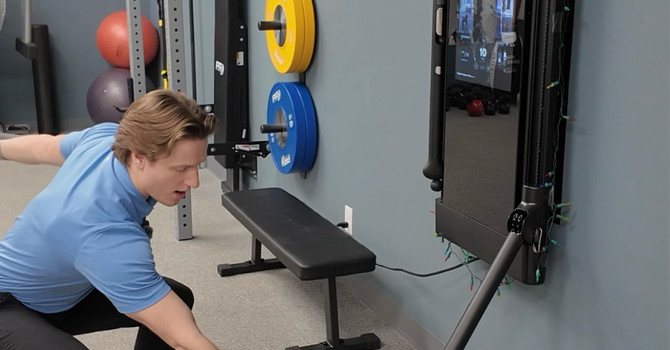
Recently we have received many questions regarding the efficacy of surgical intervention for several types of injuries. Every case is different, and there will always be a place for surgical repair in some patient populations. However, a recent study has looked at the medical necessity of surgical repair for a SLAP (Superior Labrum Anterior-Posterior) lesion or more commonly referred to as a shoulder labral tear. The following article investigated how effective a labral tear surgical repair was when compared to sham surgery, to determine whether the improved pain levels could be attributed to the placebo effect rather than the repaired tissue.
The authors in the article discussed how this condition is often over diagnosed, and they hypothesized that this could be leading to an increase in unnecessary surgeries. The large number of surgical repairs that are being performed on torn labrums appear to be a clear sign that patients are unaware of what other treatment options are available. There is increasing evidence that in many cases conservative care such as chiropractic, manual therapy, acupuncture, etc. could be the better option in the long run.
The details of the study are as follows. A double-blind, sham-control trial was conducted with 118 surgical candidates (with a mean age of 40). The patients presented with clinical symptoms and a medical history consistent with a type II SLAP lesion. These diagnoses were confirmed using an MRI arthrography. Patients were randomly assigned to different groups including a surgical labral repair, biceps tenodesis or sham surgery. A Rowe score which is a stability, function, and motion test was used to determine the instability of the joint. The Western Ontario Instability Test was also used to rate their pain levels, problems they may have, restrictions from surgery, fear of falling and stability progress. The primary outcomes for these results were measured at 6-24 months.
In conclusion, the authors found no major difference between groups at any of the follow-up appointments throughout the trial. The results were not significant enough to say that surgery is more effective than using other treatment techniques. No significant differences were found in either the Rowe score or The Western Ontario Instability Test. Postoperative stiffness was found in 5 patients after the labral surgery and in 4 people after the biceps tenodesis surgery.
So, is surgery worth all the hype? When surgery is the choice, you make there are several repercussions that you have to take into consideration. Scar tissue can begin to build up from the incision itself, the range of motion can be decreased, and pain can stay stagnant without improvement. Another factor that is seldom considered with surgery is the post-operative rehabilitation and physical therapy that will be required. Many patients are under the false impression that surgery will be a low effort solution to repair their injury and get them back to their everyday lives. The reality is however that whether you have surgery, or you choose conservative care, you will be required to undergo extensive muscle rehab and retraining to make a full recovery. The study in question also indicated that with surgery there might not even be an appreciable improvement in pain levels when compared to the conservative management options.
This begs the question, what should I do when I get injured? The first step is to be informed about all the options available. This includes understanding what sort of results can be anticipated with surgery and what side effects can be expected. Health care decisions will always be made based on what the patient feels is right for them. One of the major factors that should be considered is, if you are going to perform the same rehab after surgery, why not try conservative management first? Even more importantly if you begin conservative management and rehab only to decide to have the surgery performed, research indicates that pre-operative rehab can improve clinical outcomes. Therefore, the worst-case scenario of trying conservative management first, is better possible outcomes should you still decide to get surgery.



